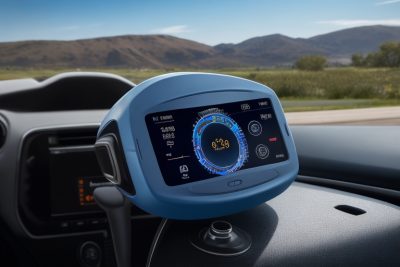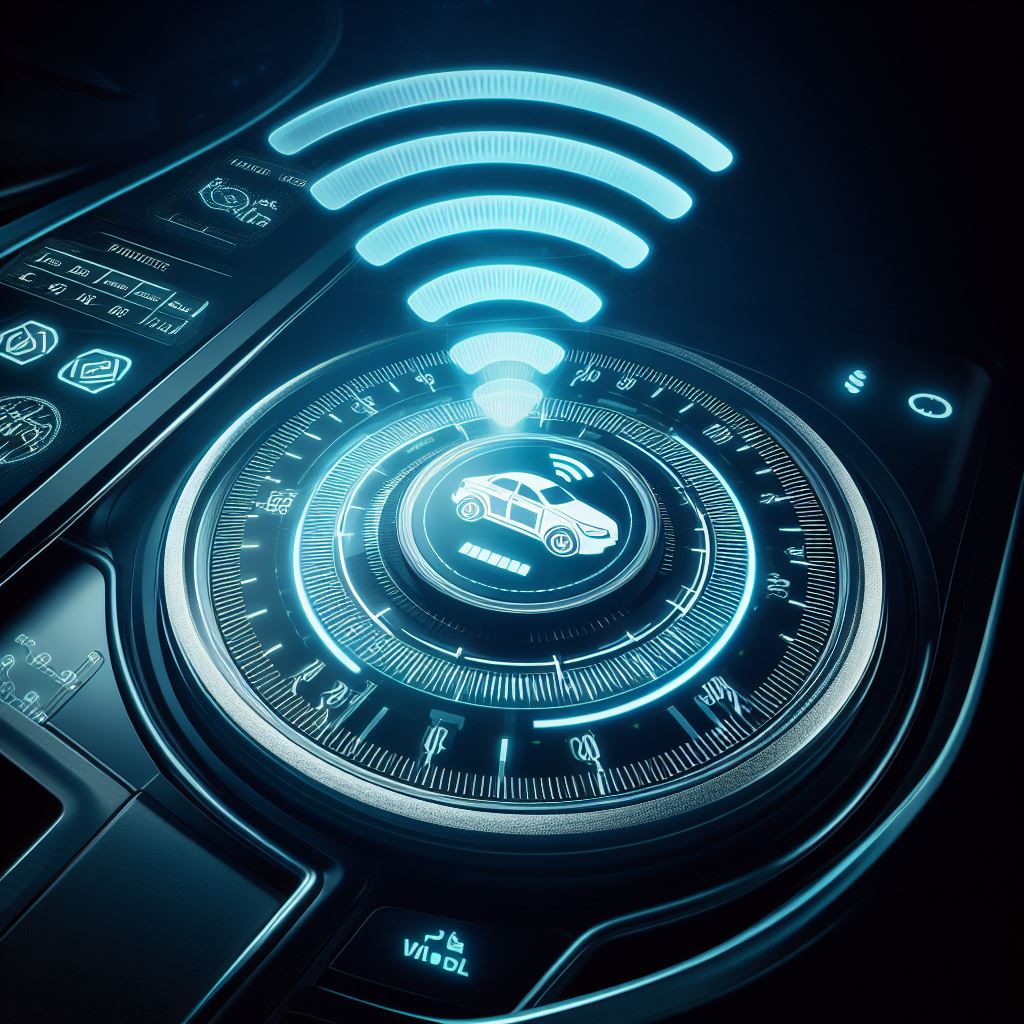Curious about how TPMS sensors communicate? Well, here’s an interesting fact: these sensors play a crucial role in your safety on the road by constantly measuring tire pressure.
But how do they transmit this information to your vehicle’s computer? In this article, we’ll explore the fascinating world of TPMS sensor communication.
From establishing a clear line of communication to displaying tire pressure information, we’ll uncover the secrets behind this essential automotive technology.
So, let’s dive in and discover how TPMS sensors keep you informed and safe on the road.
Key Takeaways
- Tire-pressure sensors communicate with the vehicle’s onboard computer to constantly measure the air pressure inside the tire.
- The sensors transmit information to the instrument cluster, where a warning light or message is displayed if the tire pressure is low.
- TPMS sensors use batteries that eventually lose their charge, requiring the replacement of the entire sensor.
- Various tire pressure gauges are available for precise measurement, including digital and analog options.

Wireless Transmission Method
To ensure accurate and timely transmission of tire pressure data, it’s important for you to understand the wireless transmission method used by the tire-pressure sensors.
These sensors use radio frequency to transmit data wirelessly to the vehicle’s onboard computer. The sensors are equipped with a small antenna that sends the tire pressure information as radio waves.
These radio waves are then received by a receiver in the vehicle, which decodes the information and displays it in the instrument cluster.
The wireless transmission method allows for real-time monitoring of tire pressure, ensuring that any changes in pressure are detected and displayed immediately.
This technology is crucial in maintaining optimal tire pressure and preventing potential accidents due to underinflated or overinflated tires.
Communication Protocols Used by TPMS Sensors
You should familiarize yourself with the communication protocols used by TPMS sensors, as they play a crucial role in transmitting tire pressure data to the vehicle’s onboard computer. TPMS sensors use a wireless communication protocol to send information about tire pressure to the onboard computer. This protocol allows for real-time monitoring of tire pressure, ensuring that any changes or abnormalities are detected promptly.
The communication between the sensors and the onboard computer is vital in providing accurate and reliable tire pressure readings to the driver. By understanding these communication protocols, you can better understand how the TPMS system works and how to interpret the tire pressure data displayed in the instrument cluster.
This knowledge will help you ensure that your tires are properly inflated, improving safety and fuel efficiency.
Data Exchange Between TPMS Sensors and Vehicle’s Onboard Computer
Make sure the data exchange between TPMS sensors and your vehicle’s onboard computer is seamless for accurate tire pressure monitoring.
The TPMS sensors play a crucial role in ensuring your tires are properly inflated.
These sensors constantly measure the air pressure inside the tires and transmit this information to the onboard computer.
This data is then displayed in the instrument cluster, allowing you to monitor the tire pressure.
If the sensors detect low tire pressure, they’ll illuminate an amber warning light to alert you.
It’s important to regularly check your tire pressure to prevent blowouts and accidents.
If the warning light comes on again after a short period, it may indicate a tire leak that needs immediate attention.
Transmission Frequency and Range of TPMS Sensors
How far can TPMS sensors transmit their signals, and at what frequency do they operate?
TPMS sensors have a transmission range of approximately 20 to 30 feet. They operate at a frequency of 315 MHz or 433 MHz, depending on the vehicle’s make and model. This frequency allows for reliable communication between the sensors and the vehicle’s onboard computer.
The sensors continuously send tire pressure data to the computer, which then displays the information on the instrument cluster. This allows you to easily monitor the air pressure in your tires and take action if it’s too low.
Additionally, the sensors also transmit a warning signal if the tire pressure drops below a certain threshold, ensuring that you’re promptly alerted to any potential issues with your tires.
Ensuring Reliable Communication in TPMS Sensor Systems
The reliable communication in TPMS sensor systems ensures accurate and timely transmission of tire pressure data to your vehicle’s onboard computer. This communication is crucial in providing you with real-time information about the air pressure in your tires.
It allows the sensors to constantly measure the tire pressure and transmit that data to the onboard computer, which then displays it in the instrument cluster. Through this communication, you’re alerted if the tire pressure is low, indicated by an amber warning light.
This ensures that you’re aware of any potential issues with your tires and can take appropriate action to prevent blowouts or accidents. By regularly checking your tire pressure and addressing any low pressure warnings, you can maintain optimal tire performance and ensure your safety on the road.
Frequently Asked Questions
How Do TPMS Sensors Communicate With the Vehicle’s Onboard Computer Wirelessly?
TPMS sensors communicate wirelessly with the vehicle’s onboard computer. They constantly measure tire air pressure and transmit the information. If pressure is low, they illuminate a warning light. This helps you stay informed and take necessary action to maintain optimal tire pressure.
What Are the Different Communication Protocols Used by TPMS Sensors?
The different communication protocols used by TPMS sensors allow them to transmit tire pressure information wirelessly to your vehicle’s onboard computer. These protocols ensure accurate and timely data transmission for efficient monitoring and warning systems.
How Is the Data Exchanged Between TPMS Sensors and the Vehicle’s Onboard Computer?
You may think TPMS sensors communicate through telepathy or magic, but in reality, they use radio frequency signals to transmit data to the vehicle’s onboard computer. It’s science, not sorcery!
What Is the Transmission Frequency and Range of TPMS Sensors?
The transmission frequency and range of TPMS sensors vary depending on the make and model of your vehicle. They communicate wirelessly with your vehicle’s onboard computer to transmit tire pressure data.
How Do TPMS Sensor Systems Ensure Reliable Communication Between the Sensors and the Vehicle’s Onboard Computer?
To ensure reliable communication, TPMS sensors use radio frequency signals to transmit tire pressure data to the vehicle’s onboard computer. This allows the computer to monitor and display the tire pressure information, helping you stay informed and safe on the road.
Conclusion
So, now you know the secret behind how TPMS sensors communicate with your vehicle’s onboard computer. It’s like they’ve their own little language, transmitting data wirelessly and using specific communication protocols.
It’s quite impressive, really. And thanks to this seamless communication, you can stay informed about your tire pressure and ensure your safety on the road.
So next time you glance at your instrument cluster, remember the fascinating technology behind it all.
Safe travels!
